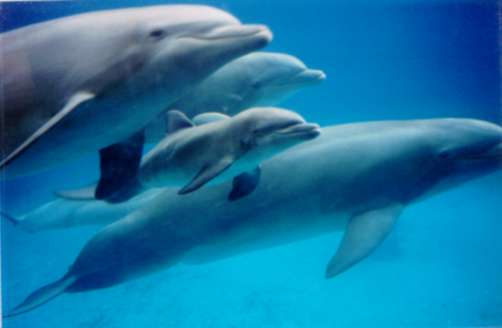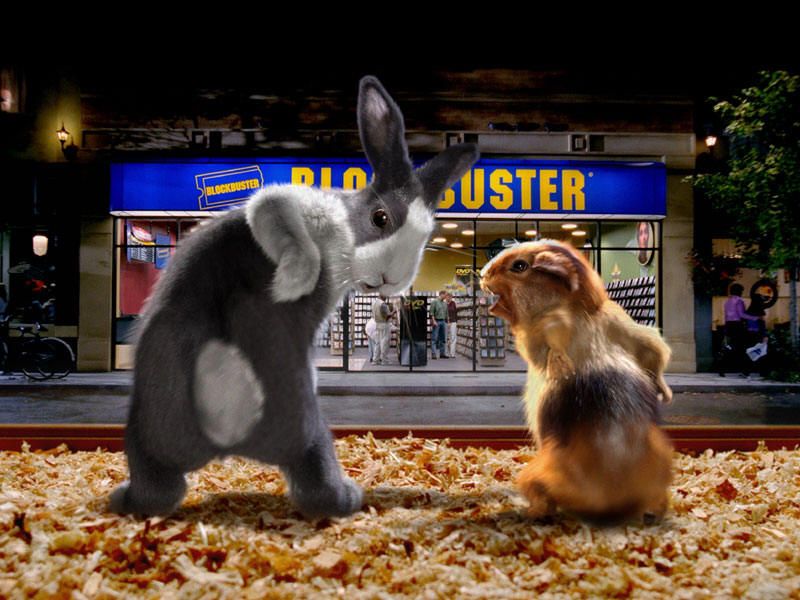 If your summer vacation plans include buying tickets to a marine mammal park or a “swim with the dolphins” program, be forewarned: You could be helping to finance the slaughter of dolphins in the wild. This is the captive-animal industry’s dirty little secret. Every year, thousands of dolphins are killed in gruesome “drive fisheries” in Japan. Most end up as meat in local supermarkets. But a few of the dolphins captured during these government-sanctioned oikomi will end up in aquariums and marine parks instead. The sale of a handful of live dolphins funds the death of all the rest.
If your summer vacation plans include buying tickets to a marine mammal park or a “swim with the dolphins” program, be forewarned: You could be helping to finance the slaughter of dolphins in the wild. This is the captive-animal industry’s dirty little secret. Every year, thousands of dolphins are killed in gruesome “drive fisheries” in Japan. Most end up as meat in local supermarkets. But a few of the dolphins captured during these government-sanctioned oikomi will end up in aquariums and marine parks instead. The sale of a handful of live dolphins funds the death of all the rest.In October and November 2006, photojournalist Boyd Harnell observed the drive fishery in Taiji, Japan. “It was a repulsive, barbaric event,” Harnell says. During a capture in October, Harnell watched as a dozen “drive boats” chased a pod of dolphins. Crew members aboard the boats clang metal poles together underwater, creating a wall of sound. The clanging metal disorients the dolphins, while the boats, blocking every avenue of escape, force the panicked animals into a small “capture cove.” Some dolphins are pursued for hours. “It was like a military operation,” writes Harnell. “The pursuit was relentless.”
Some of the dolphins were able to escape, “but the others” says Harnell, “including some calves, were trapped and hyperventilating. A few calves were unable to keep up and became separated from their mothers. They were left to die of starvation or be eaten by sharks.” Once the exhausted dolphins are inside the capture cove, their fate is sealed: The mouth of the cove is blocked with nets and the dolphins have no way out.
The morning after the first capture, Harnell saw fishers, armed with long knives, arrive to begin the slaughter. More nets are used to force the dolphins into the “killing cove,” where they are speared or their throats are cut. Video footage of past hunts show dolphins thrashing in their own blood for many agonizing minutes. Their bodies are taken to local slaughterhouses and chainsaws are used to hack them apart.
This bloody spectacle is repeated again and again from September to March. At least 400,000 dolphins have died this way in the past two decades. Local fishers consider dolphins to be their competition for dwindling fish stocks and they describe the violent oikomi as nothing more than “pest control.”
Not all of the dolphins are killed, Every year, an unknown number of young dolphins captured during drive hunts is sold into the captive-animal entertainment industry. Some will be displayed in aquariums. Others will be used in “swim with the dolphins” programs or trained to perform in marine parks. According to a report released in 2006 by the Whale and Dolphin Conservation Society, dolphins captured during drive fisheries have ended up in aquariums all over the world. Even countries that no longer allow the importation of dolphins collected during drive fisheries may be displaying animals purchased before the ban or moved through other countries to disguise their origin. The U.S. stopped importing animals from drive hunts in 1993, but not before at least 20 false killer whales (a type of dolphin) were sold to U.S. facilities.
Activists working to stop the drive fisheries have been told that the huge sums of money offered for “show” dolphins are what fuels the hunt. Dead dolphins sold as meat aren’t worth much—a few hundred dollars. But a healthy young dolphin is worth tens of thousands. Without that incentive, local fishers would find other sources of income, such as conducting dolphin watch tours, as one former fisher in Futo does now. If you don’t want to support these barbaric hunts, please don’t patronize marine parks or “swim with the dolphins” programs.
Source: People for the Ethical Treatment of Animals www.PETA.org




No comments:
Post a Comment